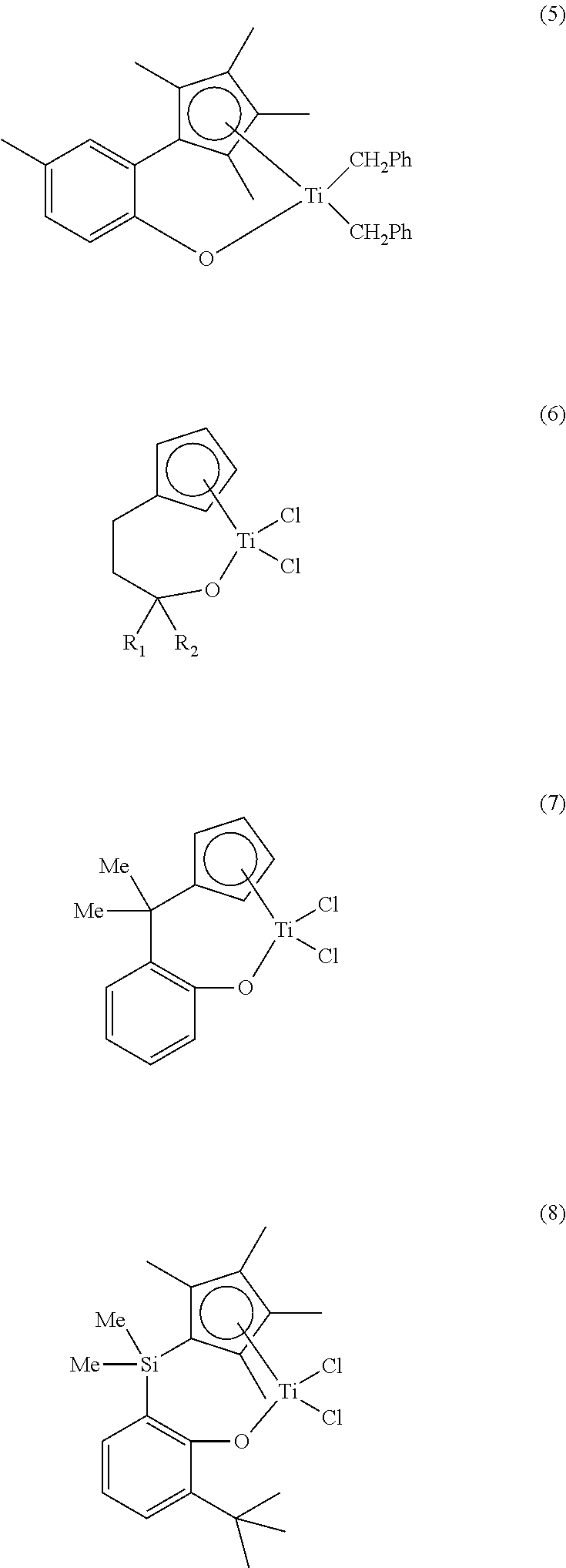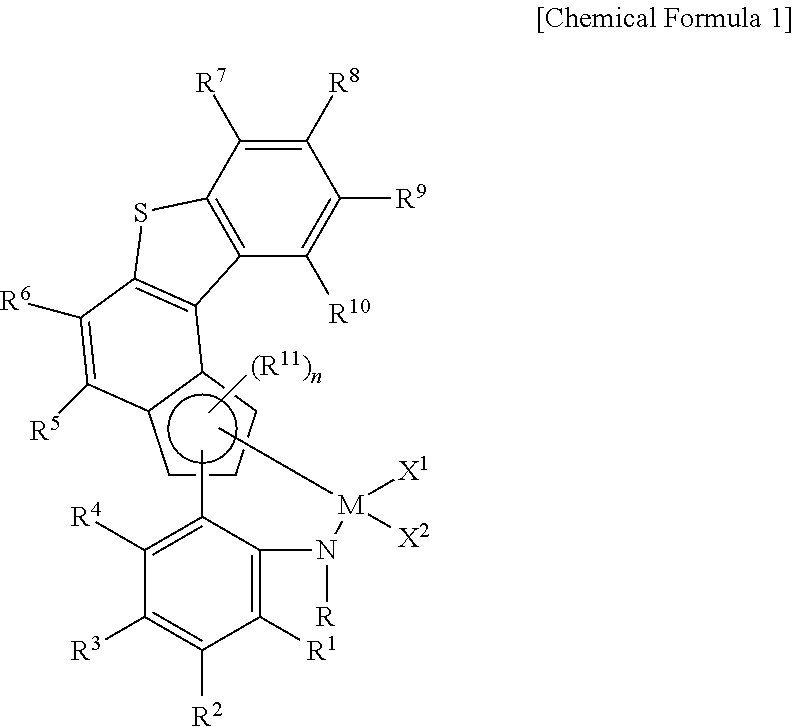Transition metal compound and catalyst composition including the same
a transition metal and catalyst composition technology, applied in the field of transition metal compound and catalyst composition, can solve the problems of small number of catalysts used in commercial factories, and achieve the effects of facilitating large steric hindrances, excellent structural stability, and excellent polymerization reactivity
- Summary
- Abstract
- Description
- Claims
- Application Information
AI Technical Summary
Benefits of technology
Problems solved by technology
Method used
Image
Examples
preparation example 1-1
[0145]To a solution dissolving 1,2,3,4-tetrahydroquinoline (5 mmol) in 8 ml of methyl-tert-butyl ether (MTBE), n-BuLi (2.3 ml, 2.5 M in hexane) was slowly added dropwise at −20° C. After slowly raising the temperature to room temperature (20±5° C.), the result was stirred for 4 hours at room temperature. The temperature was lowered to −78° C., and the result was stirred for 1 hour while injecting CO2 (g) thereto. After slowly raising the temperature, the result was stirred for 12 hours at room temperature while removing residual CO2 (g). After injecting THF (0.53 ml) and t-BuLi (3.82 ml) thereto at −20° C., the result was low temperature ripened for 2 hours at −20° C. Ketone A (0.694 g, 0.55 eq.) was dissolved in a tetrahydrofuran (THF) solution (0.6 M) and slowly added dropwise thereto. After stirring the result for 12 hours at room temperature, 1.0 ml of water was injected thereto, then hydrochloric acid (6 N, 30 ml) was introduced thereto, and the result was stirred for 30 minute...
preparation example 1-2
[0147]To a solution dissolving 1,2,3,4-tetrahydroquinoline (1 g, 7.51 mmol) in 12 ml of methyl-tert-butyl ether (MTBE), n-BuLi (8.63 ml, 1.15 eq.) was slowly added dropwise at −20° C. After slowly raising the temperature to room temperature, the result was stirred for 4 hours at room temperature. The temperature was lowered to −78° C., and the result was stirred for 1 hour while injecting CO2 (g) thereto. After slowly raising the temperature, the result was stirred for 12 hours at room temperature while removing residual CO2 (g). After injecting THF (9.76 mmol, 0.8 ml) and t-BuLi (9.76 mmol, 1.3 eq.) thereto at −20° C., the result was low temperature ripened for 2 hours at −20° C. Ketone B (1.2 g, 4.5 mmol) was dissolved in a THF solution (0.5 M) and slowly added dropwise thereto. After stirring the result for 12 hours at room temperature, 1.0 ml of water was injected thereto, then hydrochloric acid (6 N, 30 ml) was introduced thereto, and the result was stirred for 30 minutes to pr...
preparation example 1-3
[0149]To a solution dissolving 2-methyl-1,2,3,4-tetrahydroquinoline (1 g, 6.79 mmol) in 11 ml of methyl-tert-butyl ether (MTBE), n-BuLi (7.81 ml, 1.15 eq.) was slowly added dropwise at −20° C. After slowly raising the temperature to room temperature, the result was stirred for 4 hours at room temperature. The temperature was lowered to −78° C., and the result was stirred for 1 hour while injecting CO2 (g) thereto. After slowly raising the temperature, the result was stirred for 12 hours at room temperature while removing residual CO2 (g). After injecting THF (8.83 mmol, 0.7 ml) and t-BuLi (8.83 mmol, 1.3 eq.) thereto at −20° C., the result was low temperature ripened for 2 hours at −20° C. Ketone B (1.09 g, 4.1 mmol) was dissolved in a THF solution (0.5 M) and slowly added dropwise thereto. After stirring the result for 12 hours at room temperature, 0.9 ml of water was injected thereto, then hydrochloric acid (6 N, 30 ml) was introduced thereto, and the result was stirred for 30 min...
PUM
| Property | Measurement | Unit |
|---|---|---|
| melting temperature | aaaaa | aaaaa |
| crystallization temperature | aaaaa | aaaaa |
| density | aaaaa | aaaaa |
Abstract
Description
Claims
Application Information
 Login to View More
Login to View More - R&D
- Intellectual Property
- Life Sciences
- Materials
- Tech Scout
- Unparalleled Data Quality
- Higher Quality Content
- 60% Fewer Hallucinations
Browse by: Latest US Patents, China's latest patents, Technical Efficacy Thesaurus, Application Domain, Technology Topic, Popular Technical Reports.
© 2025 PatSnap. All rights reserved.Legal|Privacy policy|Modern Slavery Act Transparency Statement|Sitemap|About US| Contact US: help@patsnap.com



